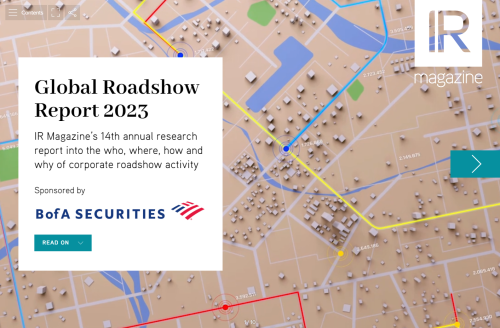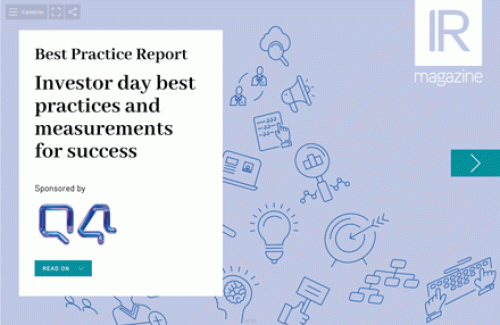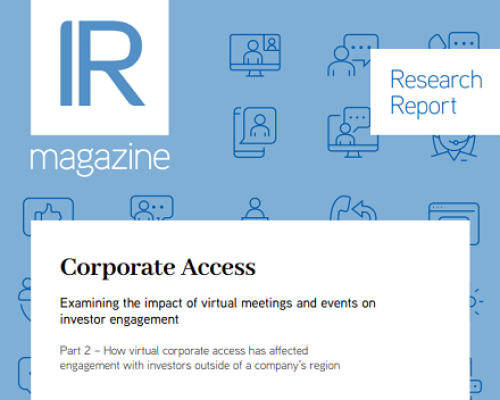Brad Allen asks: what makes one meeting more valuable than another?
What exactly is a meeting with a management team worth to the corporate access team that’s taking you on the road?
Greenwich Associates’ spring 2010 US Equity Investors Study estimates that institutional investors paid about $900 mn for management access at conferences and $1.2 bn for non-deal roadshows between Q1 2009 and Q1 2010.
The Wall St Transcript, which provides software for corporate access programs, used those figures to put an average value of $4,500 on a meeting at an industry conference and $7,500-$10,000 per meeting for a non-deal roadshow.
While those estimates are obviously ballpark, conversations with corporate access providers reveal a broader range and several factors feeding into the actual numbers.
Those who are willing to discuss how the numbers work requested anonymity so as not to tip off the competition and alienate clients.
Payment process
The first thing an IR professional needs to know is how the money flows. After the Global Research Settlement in 2003, soft-dollar commissions – a standard payment method for research and access – dried up and were replaced by commission-sharing agreements (CSAs).
At the same time, a bevy of independents sprang up to capture the growing demand (and commissions) for management access. The steep rise in CSAs took off in 2005 as a mechanism to direct payment to companies for corporate access and other services.
Today, all the players have struck CSAs. Under this type of deal, a buy-side institution concentrates its trading relationship with a handful of major powerhouses – think Barclays, JPMorgan, Goldman Sachs, Liquidnet and so on – that have made the technology investment to remain agile in today’s hyper-fast global markets.
But the institution will tell these firms to cut checks under CSAs directly to third-party firms as compensation for research services, including corporate access.
Simple and direct
One recipient of these CSA payments likes the system a lot because it’s simpler and more direct than before.
Previously, his company had a ‘correspondent relationship’ with Bear Stearns. After a quarter of bringing IR professionals and CFOs through his portfolio of buy-side clients for non-deal roadshows, he would inform them to direct a portion of their trades to Bear Stearns, which would then be told to split the commission with him.
Now he gets an email from his client’s primary brokers, asking for an invoice, or sometimes he just gets a check. For him this means much less time spent chasing trading desks and client brokers.
In addition, he’s not splitting the commission with his correspondent broker so his gross margins have shot up above 90 percent, whereas before they were around 50 percent.
Supply and demand
Solving the money equation is a multi-factor function but it all comes down to supply and demand.
While a significantly higher number of roadshows might go through New York, LA and San Francisco in any given week, institutional investors there typically pay more (as much as 50 percent more, according to one estimate) for a meeting than, for example, a portfolio manager in Portland or Pittsburgh.
Why? The simple answer is that there are a lot more institutions competing for those meetings in the major money centers, and the institutions are used to paying more for them.
Who actually shows up matters, as does the quality of the meeting. One corporate access provider describes a client that pays a flat-rate fee: $1,500 for the IRO, $3,500 for the chief financial officer and $5,000 for the chief executive.
But the client then scores the meeting and discounts the fee by 50 percent for a poor showing, or pays a bonus of up to 125 percent for ‘a great meeting’.
That all gets thrown out the window, however, for an institution that has a specific target company it wants to meet. One meeting provider suggests a one-on-one with a marquee CEO could be worth as much as $20,000.
At the other end of the spectrum, the guy who shows up for lunch who you’ve never met before and your corporate access host doesn’t seem to know much about may be worth as little as $500, according to one source.
The meeting is still worthwhile, however, if it fills out your day and opens up meetings with other, higher-value institutions in that particular city.
Haggle awayIt may take some haggling to see your target institutions. If you ever wonder why the institutional sales desk keeps recommending meetings with hedge funds that may be either long or short in your company, or companies you either don’t know or which are high-turnover traders, try to think ‘customer’.The institutional sales rep is putting forward his or her highest-volume clients. Here is where you can negotiate, recognizing that the roadshow needs to work for both sides (and, after all, those clients are handling logistics and picking up lunch). Combine some of that client’s ‘gotta do’ meetings in a group setting or have it use its relationships to get you that meeting with a firm you haven’t been able to break into. |










